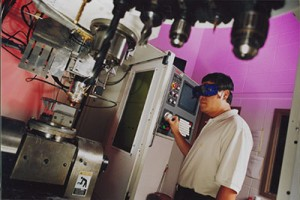
This could involve, for example, applying an AM technique to create aircraft components from two different metals – perhaps steel and copper – and then smooth the parts’ rough edges using automated computer-numerical control machining.
Dr. Frank Liou, director of the university’s Laser Aided Manufacturing Process (LAMP) Laboratory and the Michael and Joyce Bytnar Professor of Product Innovation and Creativity, has received about US$660,000 from NASA to develop computer models of various additive manufacturing approaches. He believes the models will lead to a greater understanding of how layered materials adhere, or bond, to the surface on which they are deposited.
“In many aerospace or biomedical applications, you cannot afford metal fatigue,” or cracking of the material, Liou said. “It is important to understand how well a deposited metal bonds to the surface.”
He also received another US$750,000 from NASA to research the fabrication of new materials not generally observed in nature. The research could lead to stronger metals as well as a way to repair expensive components instead of scrapping them, Liou added.





